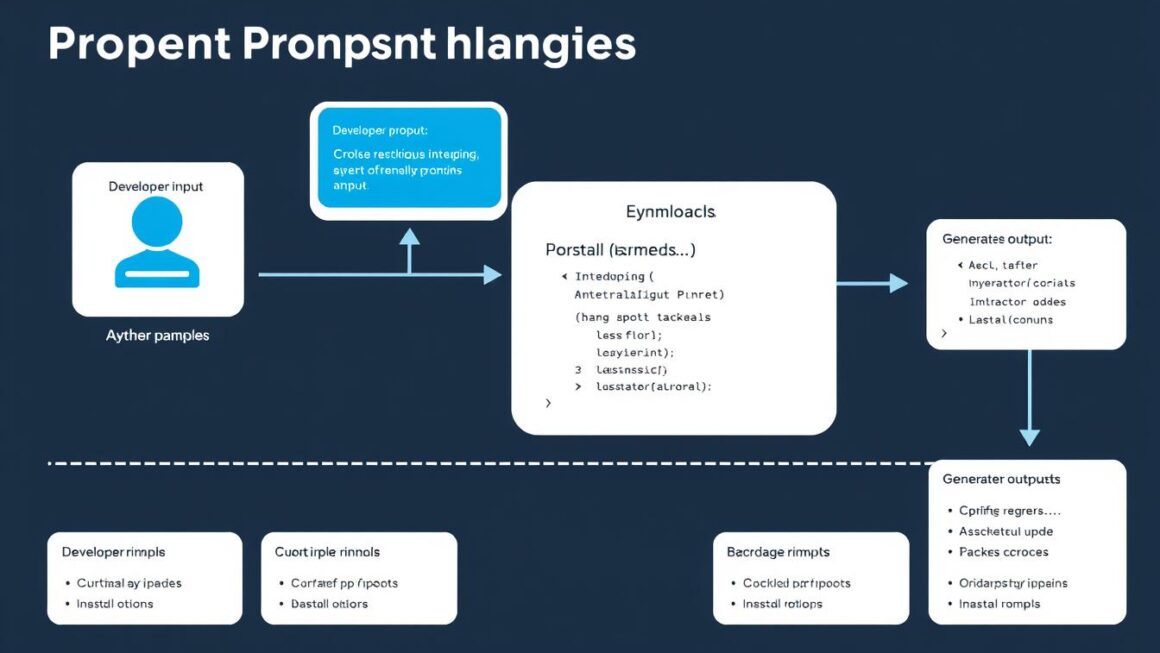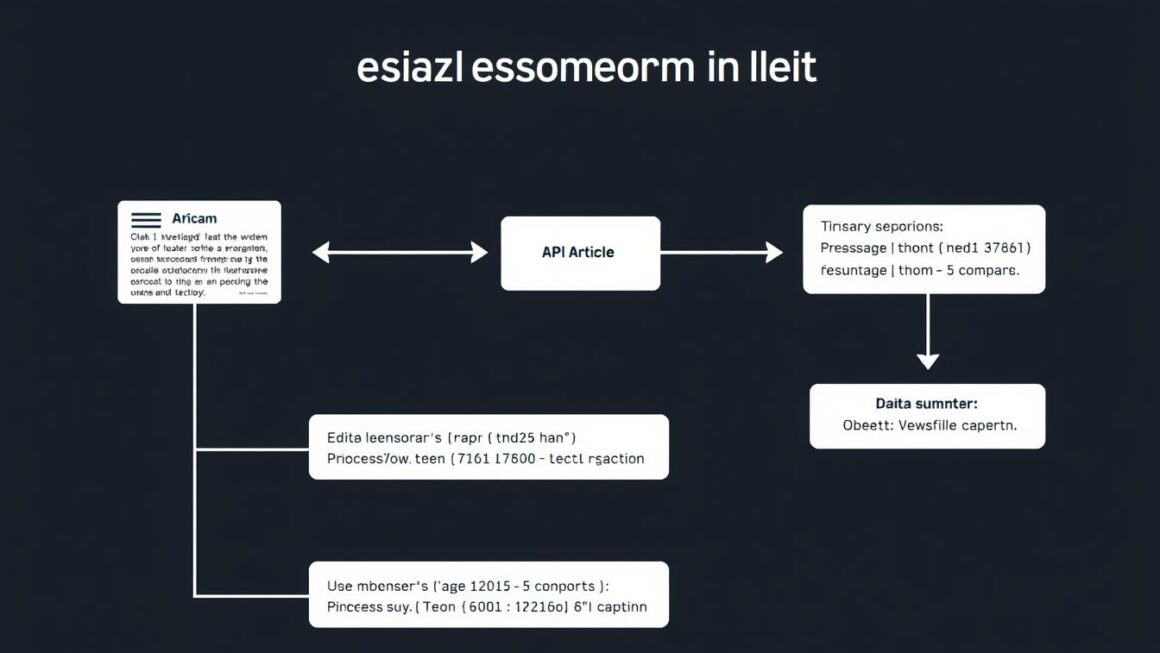
In 2025, the demand for skilled backend developers is skyrocketing, with industry salaries exceeding $114,000. As backend development continues to evolve, technologies like microservices, serverless computing, and cloud services are becoming the norm.
With applications relying heavily on robust data management and security protocols, the need for a comprehensive backend development guide has never been more pressing. Our roadmap is designed to help both aspiring and experienced developers master the complex ecosystem of modern backend technologies.
We’ll guide you through the journey of understanding basic web architecture to implementing advanced concepts like containerization and CI/CD pipelines, ensuring you’re equipped to build high-performance, secure, and scalable applications.
The Evolving Landscape of Backend Development
The world of backend development is in a state of flux, with innovations in microservices, cloud computing, and AI integration redefining the industry. As backend developers, we’re witnessing a significant shift towards more scalable, secure, and efficient systems.
The development landscape is transforming dramatically, driven by the need for faster deployment and more robust services. One of the key trends shaping this evolution is the adoption of microservices architecture, replacing monolithic systems as the preferred approach for building scalable applications.
Current Trends Shaping Backend Systems
Several key trends are currently influencing backend development. The growing importance of cloud-native development is evident, with major players like AWS, Azure, and Google Cloud dominating the market. Serverless computing is also changing how developers approach infrastructure management, allowing them to focus on code rather than server maintenance.
- The rise of cloud-native technologies is revolutionizing how we build and deploy applications.
- Serverless computing is streamlining development processes, enhancing operational efficiency.
- AI and machine learning integration is becoming standard, making applications smarter and more efficient.
To stay competitive in this rapidly changing tech landscape, developers need to master a range of programming skills and technologies. The emphasis on DevOps practices and containerization is also becoming fundamental to modern backend development, enhancing deployment speed and efficiency.
Foundation: Understanding Web Architecture

To build robust backend systems, developers must grasp the underlying web architecture. This foundational knowledge is essential for creating efficient and scalable backend applications.
Client-Server Model and HTTP Fundamentals
The client-server model is the backbone of all web applications. It involves a client, typically a web browser, making requests to a server, which then processes these requests and returns the appropriate responses. Understanding this model is crucial for backend development, as it directly impacts how backend systems are designed and implemented.
The HTTP/HTTPS protocols play a vital role in facilitating communication between clients and servers. Key aspects of these protocols include request methods (GET, POST, PUT, DELETE), status codes, and the request/response cycle. Familiarity with these concepts is essential for backend developers to manage and optimize data exchange efficiently.
Other critical components that support backend infrastructure include DNS (Domain Name System), which translates domain names into IP addresses, and hosting services, which make backend applications accessible over the internet. Additionally, infrastructure elements like load balancers, proxy servers, and content delivery networks (CDNs) are vital for ensuring the reliability and performance of backend systems.
| Component | Description | Role in Backend Systems |
|---|---|---|
| DNS | Translates domain names into IP addresses | Essential for making backend applications accessible |
| Load Balancers | Distribute incoming traffic across multiple servers | Enhances scalability and reliability |
| Proxy Servers | Act as intermediaries between clients and servers | Improves security and performance |
| CDNs | Cache content at edge locations | Reduces latency and improves content delivery |
In conclusion, understanding the fundamental concepts of web architecture is vital for backend developers. By grasping the client-server model, HTTP/HTTPS protocols, and critical infrastructure components, developers can build more robust and efficient backend systems.
Essential Programming Languages for Backend Development

The choice of programming language for backend development can significantly impact the performance, scalability, and maintainability of an application. As we explore the landscape of backend development in 2025, it’s crucial to understand the strengths and weaknesses of the most popular programming languages.
Comparing Python, Node.js, Java, and Go
We’ll compare the most popular programming languages for backend development in 2025, helping you choose the right one for your career path and project needs. Python continues to dominate, with its clean syntax and versatile frameworks making it the go-to choice for 75% of backend developers.
Node.js remains super popular, especially for real-time applications and microservices, powering major platforms like Netflix and Uber. Its event-driven architecture makes it ideal for handling multiple connections simultaneously.
Java continues to be relevant in enterprise environments, with the Spring framework maintaining its position as a robust solution for large-scale applications. Its robustness and scalability make it a preferred choice for complex systems.
Emerging languages like Go and Rust are gaining momentum for performance-critical backend systems and microservices architecture. Their focus on performance and concurrency makes them attractive for modern application development.
When selecting a programming language for backend development, consider factors like project requirements, team expertise, community support, and career opportunities. By understanding the strengths and weaknesses of each language, you can make an informed decision that aligns with your goals.
Database Management Fundamentals

Database management is a critical skill for backend developers, enabling them to design and implement efficient data storage solutions. As we explore database management fundamentals, we’ll cover the essential concepts and principles that every backend developer must master.
Data Modeling and Database Design Principles
Effective data modeling and database design are crucial for creating scalable and performant backend applications. We need to understand how to create efficient schemas using normalization concepts like 1NF, 2NF, and 3NF. Data modeling techniques help us structure data in a way that supports our application’s requirements.
Understanding data structures and algorithms is also vital for optimizing database operations and query performance. By choosing the right data structures, we can significantly improve the efficiency of our database interactions. This knowledge helps us write more efficient, scalable, and performant backend code.
Essential database concepts such as transactions, ACID properties, and concurrency control ensure data integrity in our backend applications. Transactions allow us to execute multiple operations as a single, all-or-nothing unit, while ACID properties guarantee that database transactions are processed reliably.
When it comes to choosing a database solution, we must consider our application’s specific requirements for data storage, retrieval, and manipulation. Whether we opt for a SQL or NoSQL database, understanding the strengths and weaknesses of each is crucial for making an informed decision.
In conclusion, database management plays a critical role in the overall performance and reliability of our backend systems. By mastering database management fundamentals, we can build more efficient, scalable, and robust applications that meet the needs of our users.
SQL Databases: Relational Data Management

Backend applications heavily rely on SQL databases for the persistent storage and retrieval of structured data. SQL databases are the workhorses for managing structured data efficiently, and their importance cannot be overstated in backend development.
Key Relational Database Management Systems
Two of the most popular relational database management systems are PostgreSQL and MySQL. PostgreSQL is known for its ability to handle large volumes of data and support advanced database features. MySQL, on the other hand, is renowned for its ease of use and integration with various web applications.
When it comes to backend development, understanding the strengths and use cases of different relational database management systems is crucial. We’ll compare PostgreSQL and MySQL, highlighting their capabilities in managing structured data and supporting backend applications.
Advanced SQL Concepts for Backend Developers
To effectively manage and manipulate data in SQL databases, backend developers need to master advanced SQL concepts. These include complex joins, subqueries, stored procedures, and triggers. By leveraging these features, developers can optimize database operations and improve the overall performance of their backend systems.
Query optimization is another critical aspect of working with SQL databases. By applying optimization techniques, developers can significantly enhance the performance of their database operations. This includes strategies like indexing, which can dramatically speed up data retrieval.
Furthermore, transaction management and concurrency control are essential for ensuring data integrity in multi-user backend systems. By understanding how to manage transactions effectively, developers can prevent data inconsistencies and ensure that their applications remain robust and reliable.
In conclusion, SQL databases are a fundamental component of backend development, providing robust solutions for data management. By mastering SQL databases and understanding how to optimize their performance, backend developers can build more efficient and scalable applications.
NoSQL Databases: Flexible Data Solutions

NoSQL databases offer a versatile approach to data management, catering to the complex requirements of modern backend applications. As developers, we need to understand the different types of NoSQL databases and their applications.
MongoDB and Redis
MongoDB is a popular document-based NoSQL database that allows for flexible data representation. Its ability to handle unstructured or semi-structured data makes it ideal for content management systems and applications with evolving schemas.
Redis, on the other hand, serves as both a NoSQL database and a caching solution. By storing data in-memory, Redis can dramatically improve backend performance, making it suitable for real-time applications.
When choosing a NoSQL database, developers must consider the CAP theorem, which outlines the trade-offs between consistency, availability, and partition tolerance. Understanding these trade-offs is crucial for selecting the right NoSQL database for specific use cases.
RESTful API Development and Best Practices

The art of crafting RESTful APIs is fundamental to building scalable and maintainable backend systems. As we explore the principles of RESTful API development, we’ll guide you through the core concepts that form the backbone of modern backend systems and service-oriented architectures.
Resource Modeling and HTTP Method Selection
REST (Representational State Transfer) is the dominant architectural style for web APIs, emphasizing statelessness, resource-based design, and a uniform interface using HTTP methods like GET, POST, PUT, and DELETE. To design clean and consistent RESTful endpoints, it’s essential to understand these principles.
We’ll cover resource modeling techniques that help represent your application’s domain effectively through your API design. Proper HTTP method selection (GET, POST, PUT, DELETE, PATCH) for different operations is crucial for implementing RESTful APIs correctly.
Some key aspects to focus on include:
- Statelessness and resource-based design
- Uniform interface using HTTP methods
- API versioning strategies
- Error handling approaches
- Documentation tools like Swagger/OpenAPI
By following best practices for RESTful API development, developers can create APIs that are predictable, easy to consume, and well-documented, ultimately enhancing the overall backend development process.
GraphQL: The Modern API Alternative

GraphQL is revolutionizing the way we approach API development by providing a more flexible and efficient data query language. As backend developers, we’re seeing a significant shift towards GraphQL due to its ability to allow clients to request exactly the data they need in a single request.
Schema Design and Resolver Implementation
At the heart of GraphQL are schemas, types, queries, mutations, and subscriptions. These core concepts make GraphQL a flexible solution for modern applications. When implementing GraphQL, schema design is crucial as it accurately represents your application’s data model and relationships.
Effective resolver implementation strategies are necessary to connect your GraphQL schema to your backend data sources efficiently. This enables developers to manage data effectively, reducing over-fetching and minimizing network requests.
GraphQL offers several advantages for frontend-backend communication, including strong typing and reduced data transfer. As we continue to evolve in backend development, understanding GraphQL and its implementation is crucial for building efficient APIs.
Authentication and Authorization Strategies

Securing modern backend applications requires robust authentication and authorization strategies. As backend developers, we need to ensure that our applications are protected from unauthorized access while providing a seamless user experience.
JWT, OAuth, and Role-Based Access Control
Token-based authentication using JSON Web Tokens (JWT) is a popular choice for securing backend systems. We’ll explore how JWT works, including token structure and signing methods, and discuss best practices for implementation.
Another crucial aspect is OAuth2.0 and OpenID Connect protocols, which enable secure third-party authentication flows. We’ll dive into how these protocols facilitate “Login with Google” or “Login with GitHub” features.
Role-Based Access Control (RBAC) and Attribute-Based Access Control (ABAC) are essential for managing permissions at scale. We’ll cover how these systems help in complex applications, ensuring that users have the right access without compromising security.
In backend development, choosing between session-based and token-based authentication is critical. We’ll discuss the pros and cons of each approach and provide guidance on when to use them.
By implementing these authentication and authorization strategies, developers can significantly enhance the security of their backend applications and systems.
Microservices Architecture and Implementation

In the realm of modern backend systems, microservices architecture has emerged as a crucial strategy for developing complex applications that are both scalable and maintainable. This approach involves breaking down a large, monolithic application into smaller, independent services that can be developed, deployed, and scaled individually.
Core Principles of Microservices Design
The core principles of microservices design include defining clear service boundaries, enabling independent deployment, and embracing technological diversity. By doing so, development teams can work on different services simultaneously without conflicts, using the most appropriate technology stack for each service.
One of the key challenges in implementing microservices architecture is ensuring effective service discovery and inter-service communication. Service discovery mechanisms allow services to locate and communicate with each other dynamically in distributed systems.
- We’ll explore synchronous communication methods like REST and gRPC.
- We’ll discuss asynchronous approaches using message queues and event streaming.
Implementing microservices architecture also requires addressing challenges such as data consistency and distributed transactions. To mitigate these challenges, patterns like API Gateway, Circuit Breaker, and Bulkhead can be employed.
As we continue to navigate the complexities of backend development, adopting microservices architecture can significantly enhance the scalability, maintainability, and resilience of our applications and systems.
Caching and Performance Optimization

As we dive into the world of microservices, caching emerges as a critical strategy for enhancing backend performance. Caching involves storing frequently accessed data in a more accessible location, reducing the need for database queries or computationally expensive operations.
Redis Implementation
Redis is a powerful caching solution that offers a range of data structures, persistence options, and seamless integration with various backend frameworks. Its versatility makes it an ideal choice for implementing caching in microservices architecture.
To implement Redis effectively, we need to consider its data structures, such as strings, hashes, lists, sets, and maps. Each of these structures has its own use cases, and choosing the right one is crucial for optimal performance.
Data Structures and Persistence
Redis supports various data structures that can be used to store and manage cached data. For instance, we can use Redis hashes to store complex data structures, while Redis lists can be used to implement message queues.
Redis also offers persistence options, including snapshotting and append-only files, to ensure data durability in the event of a restart or failure.
By leveraging Redis’ capabilities, we can significantly improve the performance of our backend applications and enhance overall user experience.
Cache Invalidation Strategies
One of the critical challenges in caching is ensuring data consistency between the cache and the primary data store. Cache invalidation strategies are essential to address this challenge.
We will explore various cache invalidation techniques, including time-to-live (TTL) based expiration, event-driven invalidation, and manual invalidation. Each of these strategies has its own advantages and use cases.
Implementing the right cache invalidation strategy is crucial to maintaining data consistency and preventing stale data from being served to users.
Additional Performance Optimization Techniques
Beyond caching, there are several other techniques to optimize backend performance. These include database query optimization, connection pooling, and asynchronous processing.
By optimizing database queries, we can reduce the load on our database and improve response times. Connection pooling helps to minimize the overhead of establishing new connections, while asynchronous processing enables our application to handle multiple requests concurrently.
By combining these techniques with effective caching strategies, we can significantly enhance the overall performance and scalability of our backend systems and applications, ensuring a better user experience and supporting business growth.
Containerization with Docker and Orchestration

Containerization has revolutionized the way we develop, deploy, and manage backend applications, with Docker leading the charge. This technology has enabled developers to package applications into containers that are lightweight, portable, and consistent across different environments.
Docker has become the go-to platform for containerization, making it super easy to package and run applications consistently across different environments. Recent data shows that more than 80% of companies worldwide are using containers in production, highlighting the significance of Docker in modern development workflows.
Docker Fundamentals
To get started with Docker, it’s essential to understand its core components, including images, containers, Dockerfiles, and the container lifecycle. Docker images serve as templates for creating containers, while Dockerfiles are scripts that contain instructions for building Docker images.
Creating efficient Docker images is crucial for optimizing backend application deployment. This involves minimizing image size, ensuring security, and speeding up the build process. By leveraging Docker’s capabilities, developers can significantly enhance the development workflow.
Docker Compose for Multi-Container Applications
Docker Compose is a tool that simplifies the process of defining and running multi-container Docker applications. It’s particularly useful for development environments and simple deployments, allowing developers to define services, networks, and volumes in a single configuration file.
Kubernetes Basics
As we scale our containerized applications, we need an orchestration platform that can manage the complexity of multiple containers across various hosts. Kubernetes has emerged as the industry-standard for container orchestration, providing features like automated deployment, scaling, and management of containerized applications.
Kubernetes introduces several key concepts, including pods, deployments, services, and namespaces, which work together to provide a robust infrastructure for deploying and managing modern backend applications. By understanding and leveraging Kubernetes, developers can ensure their applications are highly available, scalable, and resilient.
By embracing containerization with Docker and orchestration with Kubernetes, we can significantly enhance our backend development workflow, enabling consistent development, testing, and production environments. This not only improves productivity but also reduces the complexity associated with deploying and managing modern applications.
Scaling and Monitoring Backend Systems

Effective scaling and monitoring are the backbone of reliable backend systems in today’s digital landscape. As we continue to embrace cloud-based AI and machine learning operations, our backend operations become more reliable and secure.
Horizontal Scaling and Performance Metrics
We’ll explore comprehensive strategies for scaling backend systems to handle growing user bases and increasing workloads efficiently. This includes comparing horizontal scaling (adding more machines) with vertical scaling (adding more power to existing machines), discussing when each approach is most appropriate.
To improve availability and performance, we’ll cover load balancing techniques that distribute traffic across multiple instances of your backend services. Additionally, we’ll discuss database scaling approaches including replication, sharding, and read replicas that help maintain performance as data volumes grow.
Monitoring systems and observability tools provide insights into your backend performance, helping you identify bottlenecks and potential issues. We’ll introduce you to these tools and explore how AI and machine learning are being integrated into backend monitoring and scaling decisions, creating more intelligent and self-optimizing systems.
By implementing these strategies, you’ll be able to ensure your applications remain performant and reliable, even under increased load. This is crucial for maintaining user satisfaction and staying ahead in today’s competitive digital landscape.
DevOps and CI/CD for Backend Development

In the realm of backend development, adopting DevOps and CI/CD pipelines is no longer a choice but a necessity for achieving efficiency and reliability. As we explore the landscape of modern backend development, it becomes clear that DevOps practices and CI/CD pipelines are crucial for streamlining workflows and improving product quality.
Automated Testing and Deployment Pipelines
One of the core components of CI/CD is automated testing, which ensures that code changes are thoroughly validated before they are deployed. This includes unit tests, integration tests, and end-to-end tests, all of which play a vital role in maintaining code quality and preventing regressions.
Continuous Integration (CI) involves automatically building and testing code changes as they are committed to the version control system. This early detection of issues helps in reducing bugs and makes the development process more efficient. On the other hand, Continuous Deployment (CD) takes the validated code changes and automatically deploys them to production, ensuring that updates are delivered to users quickly and reliably.
Several popular CI/CD tools are available, each with its own strengths. Jenkins is known for its flexibility and wide range of plugins, while GitHub Actions and GitLab CI offer tight integration with their respective platforms. CircleCI is another popular choice, praised for its ease of use and scalability. When choosing a CI/CD tool, it’s essential to consider factors such as ease of setup, integration with existing tools, and scalability.
To set up an effective deployment pipeline, start by defining the stages involved, such as build, test, and deploy. Use tools like Docker to containerize your application, ensuring consistency across different environments. Implement automated testing at each stage to catch issues early. Finally, monitor your pipeline’s performance and make adjustments as needed to optimize efficiency and reliability.
By embracing DevOps practices and leveraging CI/CD pipelines, backend development teams can significantly improve their productivity and the quality of their applications. As the landscape continues to evolve, staying informed about the latest tools and platforms is crucial for maintaining a competitive edge.
Security Best Practices for Backend Systems

In the realm of backend development, security is not just a feature, but a foundational element. As we continue our journey through the ultimate backend development roadmap, it’s crucial to emphasize that security cannot be an afterthought. Backend applications are prime targets for attacks as they often handle sensitive data and business logic.
OWASP Top10 and Security Headers
Understanding and addressing the OWASP Top10 security risks is a critical step in securing backend systems. These risks include injection flaws, broken authentication, sensitive data exposure, and XML external entities (XXE). Implementing proper input validation, output encoding, and parameterized queries can prevent SQL injection and cross-site scripting (XSS) attacks.
To enhance the security posture of your backend applications, it’s essential to implement secure authentication and session management techniques. This includes using HTTPS implementation, security headers, and content security policies. For instance, using Content-Security-Policy (CSP) headers can significantly reduce the risk of XSS attacks by specifying which sources of content are allowed to be executed within a web page.
Furthermore, regular security testing, vulnerability scanning, and code review practices are vital to identify and address security issues early in the development lifecycle. This proactive approach ensures that potential vulnerabilities are mitigated before they can be exploited.
As backend developers, adhering to best practices and staying informed about the latest security threats and mitigation strategies is crucial. By doing so, we can develop robust and secure backend applications that protect user data and maintain the integrity of our systems.
Conclusion: Navigating Your Backend Development Journey
Our journey through the ultimate backend development roadmap has equipped us with the knowledge to tackle the challenges of 2025. As we conclude, it’s essential to recognize thatbackend developmentis a continuously evolving field, with newtechnologiesand approaches emerging regularly.
To stay ahead, continuous learning is crucial. We recommend applying this roadmap to your own development journey, whether you’re just starting out or looking to advance your existing skills. Utilize resources such as books, courses, and communities to deepen your expertise.
As you progress, consider building real-world projects that apply the concepts covered in this roadmap. Hands-on experience is the most effective way to master backend development. Career growth opportunities abound, from junior roles to specialized positions in areas like system architecture, DevOps, and cloud infrastructure.
By following this roadmap and committing to ongoing education, you’ll be well-positioned to navigate the ever-changing landscape ofbackend developmentand advance yourcareeras a skilled developer.



